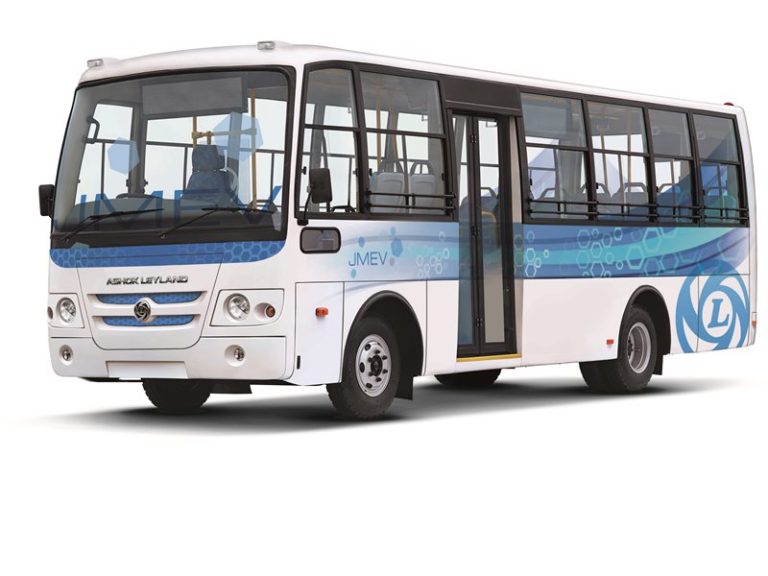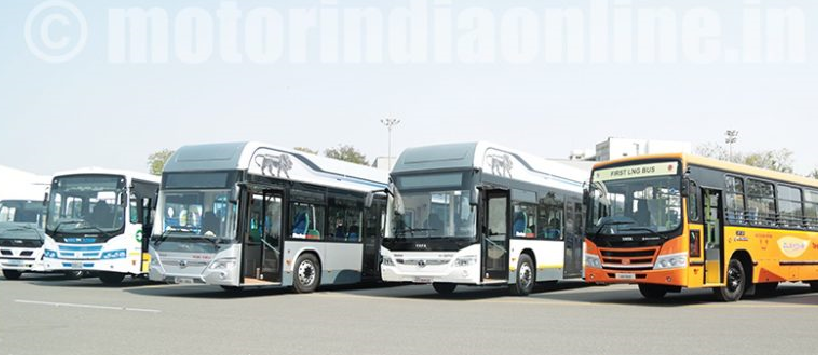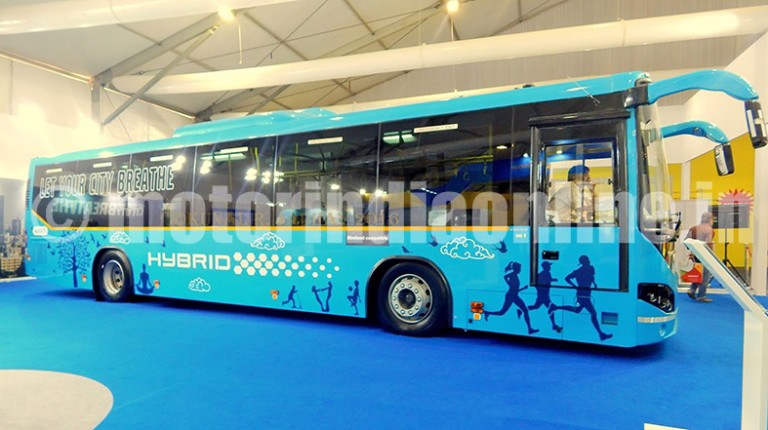The Indian bus market is fast moving towards electric and hybrid solutions. Whether or not these alternative mobility options would become practically viable on a large scale in the near future might remain a valid question but the market seems to be ready, at least in terms of availability of products. What’s required next is the setting up of necessary infrastructure, especially when it comes to fully-electric and plug-in hybrid buses which need charging stations for the buses to keep moving seamlessly.
Being the second largest bus market in the world, with over 50,000 large buses added on roads every year, sustainable mobility seems to be the need of the hour and it is good to see OEMs embrace the challenge by coming up with appropriate solutions that might become routine choices for STUs in the long-term.
We take a look at the top three developments on the electric and hybrid bus transport front in India in the last year or so.
Ashok Leyland
Last year, Ashok Leyland had unveiled the country’s first electric bus ‘Circuit’ designed and engineered entirely in India, by Indians, for the nation. In line with its vision for the future of mass mobility, the country’s first ‘Made in India’ 100% electric bus is a zero-emission vehicle created by the OEM specifically for Indian road and load conditions. This new Circuit range of vehicles will be offered on multiple platforms.
The Circuit series vehicles are all exclusively engineered on India-specific platforms that can tackle varied topography, gradients, and usage conditions. Integrated with a fire detection and suppression system (FDSS), this truly Indian innovation can travel 120 kilometres on a single charge. It is built on a simple, mass-market platform that will enable the operator to cater to customers in city centres with minimal operational and maintenance costs.
Tata Motors
As one of the country’s largest bus manufacturers, with the complete range of transit vehicles that meet every need, Tata Motors continues to be a leader in this segment not just by setting technological benchmarks but also by adapting innovations effectively to suit Indian travel conditions. In order to push green technology in mass public transportation in India, Tata Motors had recently unveiled a full electric and a hybrid bus and also showcased its LNG-powered bus and an articulated bus. Besides, the OEM also unveiled a bus with fuel cell technology and electric versions of its light commercial vehicles SuperAce, Magic and Magic Iris. Developed indigenously, these buses are safe, comfortable and are economically viable ‘Made in India’ solutions.
Uniquely engineered for ease of operation, the Tata Starbus Diesel Series Hybrid Electric Bus uses diesel and electric in series hybrid mode, to propel the vehicle that complies with all UBS-II (Urban Bus Specifications), AIS 052 and CMVR (Central Motor Vehicle Rules) specifications.
The Tata Starbus Hybrid offers substantial improvement in fuel economy compared to a conventional bus. The buses series hybrid technology offers lowest cost of ownership, with improved fuel savings of 25-30 per cent and reduction in emissions in comparison to conventional buses. The bus also runs on pure electric mode, for around 30-35 per cent of the total travel distance.
The vehicle dimensions and the seating capacity makes the Ultra Starbus Electric a perfect combination for staff, school and general city transportation. These buses are fitted with CCTV cameras an Intelligence Transport Systems (ITS) for public information, through GPS via electronic destination display boards, indicating expected time of arrival at bus stops and route announcements within the bus. These buses also enhance operational efficiency for State Transport Units (STUs), with new generation Telematics for efficient and user friendly vehicle maintenance and tracking.
Volvo Buses
Responding to the rapidly evolving market demands for clean technology in buses, Volvo Buses had taken the lead by introducing the Volvo hybrid city bus in India last year. Navi Mumbai became the first-ever city in the country to adopt hybrid buses.
Volvo Buses has played a pioneering role in the area of bus-based public transport in many countries. From developing BRT related solutions, to cleaner technologies, Volvo has always taken the initiative with the intent to make a difference. The Volvo hybrid solution has a proven track record of saving 30 to 35 percent fuel. The technology also enables up to 50 percent reduction in hazardous emissions in actual customer operations.
The Volvo 8400 Hybrid City Bus is a variant of the existing Volvo City Bus, nearly 1,500 units of which are currently operating in 34 cities across India. This new bus has a parallel hybrid system, which comprises of a 5-litre, 4-cylinder, in-line diesel engine and an electric motor. The vehicle is propelled purely on electric mode from the moment it starts till it gains required momentum. This phenomenon happens at every stop & start during the operation cycle, which results in significant fuel savings and reduction in emissions. The batteries get charged during operations by the re-generative brake system.
One of the biggest benefits of the hybrid technology is the reduction in noise levels, both inside and outside the bus. This has direct impact on the overall experience for passengers with lower NVH levels. The vehicle also has the Volvo I-Coaching, a one-of-its-kind on-board driver training system that ensures the best performance from the hybrid system. The telematics system with fleet and vehicle management capabilities monitors and generates fuel reports, vehicle health reports, specific battery usage and health monitoring feature.
Replacing 5,000 diesel buses in Indian cities with electric buses would reduce diesel consumption by 95 million litres and reduce CO2 emissions by 238,000 tonnes. The IRU-led All India Smart Move High Level Group is currently shaping policy recommendations on how to sustainable decarbonise collective passenger transport in India, thus reducing air pollution and enabling the country to reach the national goals under the climate action plan.


